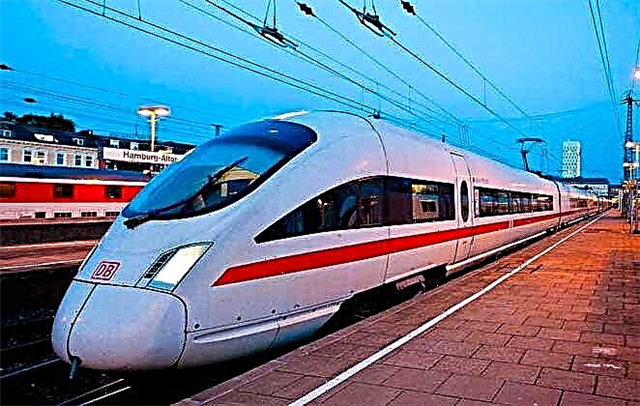In December 2021, there was an outbreak of a new coronavirus in China (2019-nCoV) or Covid-19 in Wuhan, Hubei province. Thousands of people have been infected around the world, more than 98% of whom are in China. Most of the deaths caused by the epidemic have been reported in this country. The first deaths outside the Chinese mainland occurred in the Philippines, followed by Hong Kong, Japan, France and Taiwan.

Coronavirus in China
Chinese President Xi Jinping noted that the impact of the outbreak on the country's economy is manageable and advised on the orderly resumption of work on February 24. He noted that each region of the country must take a clear approach, taking into account the risks associated with health and safety.
The largest number of infections occurred in Hubei province, where the virus is believed to have originated. Wuhan has the largest number of cases, followed by Zhejiang, Guangdong, and Hunan. On February 13, the province recorded 30% of new infections - 14,840.
In order to contain the spread of the disease, China has temporarily suspended air, road and rail links from Wuhan and neighboring provinces. These restrictions have also been imposed on airlines in Hong Kong, Macau and Taiwan.
Health officials in Beijing have announced a 14-day quarantine for people who come to the country from countries affected by the coronavirus. These measures were announced to prevent new outbreaks of the virus in the country.
For the first time since the outbreak in China, new cases were reported on February 26, and the number was lower than outside the country. China has reported a drop in the number of new reported cases since February 18. The number of patients cured has exceeded the number of new confirmed cases.
Anthony S. Focky, immunologist and director of the National Institute of Allergy and Infectious Diseases, noted that it is too early to draw conclusions about a slowdown in the spread of the epidemic. It is necessary to monitor the situation for several days.
Restrictions in Xiaogan City - Second Most Affected City in China
People in Xiaogan City, Hubei Province were prohibited from leaving their homes. Xiaogan City is the second most infected city after Wuhan. As of February 27, the city had 3,516 cases and 113 deaths.
Xiaogan City is home to over four million people who must stay in their homes. All transport was stopped and public events were canceled. Medical workers and people transporting essential goods were exempted from restrictions. Several supermarkets and pharmacies remain open.
Tourist restrictions
Most countries have closed their borders with China, while some have cut direct shipments, including the United States, Australia, New Zealand, Indonesia, the Maldives and Japan.
However, the World Health Organization (WHO) has recommended no restrictions on travel or trade with China, despite declaring the outbreak a global public health emergency.
Israel, Iraq, Italy, Guatemala, El Salvador, Oman, Saudi Arabia, Russia, Vietnam, Singapore and Pakistan are some of the countries that have either imposed travel restrictions or canceled direct flights to China, according to the BBC and Reuters.
How China is responding to new outbreaks of coronavirus
China is taking immediate measures to contain the spread of the virus, diagnosing and treating on time to reduce the impact.
On January 23, the Chinese Civil Aviation Authority instructed foreign airlines to cut their scheduled flights to Wuhan. This was necessary to control and prevent the spread of pneumonia caused by the coronavirus.
The government has taken a number of measures to contain the outbreak:
- Consolidation of trained medical personnel from all over the country;
- Securing supplies to the most vulnerable and affected areas;
- Construction of new hospitals;
- Vacation extension for schools and businesses.
Construction of hospitals for treatment and care
 China has prepared the opening of the Dabie Mountain Regional Medical Center, a 1,000-bed hospital, accelerating construction and opening it Jan.29 to quarantine people with coronavirus symptoms. It also opened a second quarantine hospital called Leishenshan hospital in Wuhan with 1,500 beds.
China has prepared the opening of the Dabie Mountain Regional Medical Center, a 1,000-bed hospital, accelerating construction and opening it Jan.29 to quarantine people with coronavirus symptoms. It also opened a second quarantine hospital called Leishenshan hospital in Wuhan with 1,500 beds.
The new 1,000-bed hospital, dubbed Huoshenshan hospital, was completed in a record ten days to provide enhanced care and treatment for coronavirus patients.
The decision was made to convert 11 facilities throughout the city of Wuhan, including gyms, exhibition and sports centers, into temporary hospitals with more than 10,000 beds to treat patients with mild symptoms. Eight more facilities were planned to be converted into hospitals. The first three facilities were refurbished on 03 February, providing 3400 patient beds.
In addition, 20 mobile hospitals were deployed across the country and 1,400 nurses were recruited to treat patients with mild symptoms. An infectious diseases hospital is also under construction in Zhengzhou, Henan Province.
Development of vaccines, drugs and diagnostics
The Wuhan Institute of Virology, Chinese Academy of Sciences, has partnered with a biopharmaceutical company to develop two diagnostic kits for detecting coronavirus. Using an optimized testing method developed at Zhongnan Hospital of Wuhan University, the infection is diagnosed in just two hours, helping to start treatment faster and improve recovery.
On January 26, the National Medicines Administration also approved two diagnostic kits and a testing system developed by biopharmaceutical companies based in Hubei. Meanwhile, efforts to develop a vaccine are ongoing and two chemical compounds have been found to be effective in curbing viral activity, which will help accelerate the development of a cure for the new coronavirus.
Wuhan Jinyintan Hospital was the first to use Kaletra (lopinavir / ritonavir), an HIV / AIDS drug, to treat new coronavirus patients.
The Chinese Academy of Sciences has offered scientists and researchers free and open access to China Science and Technology Cloud (CSTC) resources and services to help them research the 2019-nCoV. Scientists will have access to high performance computing, software and other resources to facilitate interaction with other virologists.
Baidu's research has allowed gene testing agencies, surveillance centers and research institutions to use LinearFold, its RNA structure algorithm that will help identify the virus in less than half a minute compared to about an hour before.
Ban on the sale of drugs for fever and cough
China has banned the sale of fever and cough medicines in some provinces to encourage people to seek medical attention in hospitals rather than self-medicate. Pharmacies across Nanjing and Hangzhou have announced a ban on the sale of drugs, CNN reported.
Pharmacies in Beijing have been tasked with registering all customers who buy fever and cough medicine, including their symptoms, names, addresses, ID numbers and contact information, state news agency Xinhua said.
Consequences of the impact of the coronavirus on China
 The coronavirus outbreak has resulted in the closure of several air, rail and road routes, as well as production cuts and temporary closure of manufacturing plants, which is expected to reduce China's GDP by several billion dollars.
The coronavirus outbreak has resulted in the closure of several air, rail and road routes, as well as production cuts and temporary closure of manufacturing plants, which is expected to reduce China's GDP by several billion dollars.
Large companies such as Apple have temporarily closed stores and production, and large telecommunications companies such as Huawei have suspended travel to and from China.
China's National Bureau of Statistics (NBS) announced that the purchasing managers' index (PMI) for China's manufacturing sector stood at 35.7 in February. The PMI fell below 50 in January due to the coronavirus outbreak. A PMI above 50 indicates expansion, while a rating below 50 indicates contraction.
The rating was compiled on the basis of a survey of 21 manufacturing industries, in which a decline was recorded. However, the impact of the coronavirus outbreak has varied across industries.
PMI for chemicals and automobiles was below 30, while for food and beverage it was above 42.
Impact on industry
Some of the industries that have been hit by the impact of the coronavirus outbreak in China are travel and tourism, shipping, pharmaceuticals, automotive, electronics and manufacturing. Supply chain disruptions are expected to affect a number of related industries and markets.
Data from the China Association of Automobile Manufacturers (CAAM) showed car sales fell 18% in January, Reuters reported. The outbreak will affect both sales and production in the short term due to extended vacations and shortages of workers and auto parts. CAAM also predicted that competition in the industry would intensify and that suppliers of smaller parts and components could collapse.
Hubei Province is a major vehicle manufacturing center for several companies including Dongfeng Motor Group, Honda Motor, Renault SA and Peugeot SA. All companies have announced that they will be postponing the resumption of production. Companies that operate factories outside of Hubei, including Tesla, Volkswagen and General Motors, have also announced that their factories will be closed within the next few weeks.
The largest companies that have announced business impact in the country hit by the coronavirus are Nike, Hyundai, Starbucks, Tata Motors, Mcdonald's, Disney, Carlsberg and H&M, according to Reuters and CNBC. Airbus closed its last assembly line in Tianjin on February 05. Gucci-owned Kering announced the temporary closure of half of its stores in China on February 12 due to the COVID-19 outbreak, Reuters reported.
Impact on the pharmaceutical industry and drug supply
The coronavirus is expected to have a negative impact on the Chinese pharmaceutical industry from the supply side. According to the FDA, China accounts for 13% of the active pharmaceutical ingredients produced for the US market, while India accounts for more than 18%.
Delays in production and logistics can be costly for Chinese API manufacturers if Indian competitors are quick to respond to market changes.
Impact of the coronavirus on the Chinese economy
Over the past 40 years, the average growth rate of China's GDP has been 10%, but in recent years the growth rate has been slowed for many reasons, in particular due to structural constraints.
The coronavirus hit at a time when the Chinese economy has begun to slow and the country is struggling to identify new vectors for development and growth amid trade tensions with the United States. According to the World Bank, in 2021, China's growth rate was less than 6.1%, and in 2021, economic growth will fall below 6%, and in 2021 it will slow down altogether.
The coronavirus is expected to slow further due to its impact on the country's trade and impact on a wide range of industries. The Organization for Economic Cooperation and Development (OECD) estimates China's economic growth in 2021 to be below 5%.
China has already taken a number of financial measures to reduce the impact of the coronavirus, although the impact for the first quarter is inevitable and further impact depends on the control of the epidemic.











